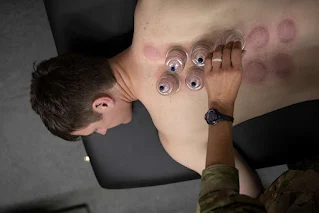Hijama: An Ancient Medical Practice
Hijama: An Ancient Medical Practice
Hijama, also known as cupping therapy, is an ancient medical practice that has been used for centuries to treat a variety of ailments. The practice involves placing cups on the skin and creating a vacuum, which draws blood to the surface. This is thought to help to remove toxins and improve circulation.
History of Hijama
Hijama is well known in Islam, and it is a traditional practice in many cultures, including Chinese, Middle Eastern, and African cultures. It is also a part of Traditional Chinese Medicine (TCM).
Scientific Evidence for Hijama
There is some scientific evidence to support the use of hijama for certain conditions. For example, one study found that hijama was effective in reducing pain and improving function in people with rheumatoid arthritis. Another study found that hijama was effective in treating chronic neck pain.
However, more research is needed to confirm the effectiveness of hijama for other conditions. It is important to note that hijama is not a cure for any disease, and it should not be used as a substitute for conventional medical treatment.
Benefits of Hijama
The potential benefits of hijama include:
· Improved circulation
· Reduced inflammation
· Increased energy
· Improved sleep
· Boosted immune system
· Reduced stress
· Improved mood
Risks of Hijama
The potential risks of hijama include:
· Bruising
· Bleeding
· Infection
· Allergic reaction
· Vasovagal reaction (a drop in blood pressure that can cause dizziness or fainting)
Who Should Not Get Hijama
Hijama should not be performed on:
· Pregnant women
· People with bleeding disorders
· People with open wounds or infections
How to Find a Qualified Hijama Practitioner
If you are considering hijama, it is important to find a qualified practitioner. You can ask your doctor for a referral, or you can search online for a qualified practitioner.
What to Expect During Hijama
The practitioner will first clean the area of the skin where they will be performing hijama. Then, they will place cups on the skin and create a vacuum. This will cause the blood to be drawn to the surface. The practitioner may then make small incisions in the skin to allow the blood to flow. The cups will be left on for a few minutes, and then they will be removed.
Aftercare for Hijama
After hijama, you may experience some bruising and bleeding. This is normal and should go away within a few days. You should avoid strenuous activity for 24 hours after hijama.
In brief, Hijama is an ancient medical practice that has been used for centuries to treat a variety of ailments. There is some scientific evidence to support the use of hijama for certain conditions, but more research is needed. If you are considering hijama, it is important to talk to your doctor first.


.webp)
.webp)
.webp)
.jpg)
.webp)